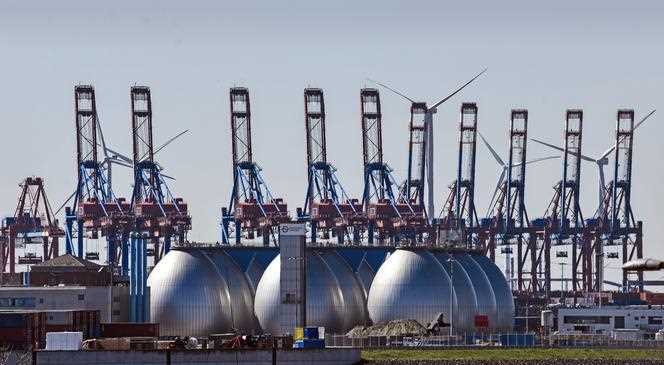These are four gigantic floating installations 300 meters long, each equipped with two dome-shaped tanks. They will make their appearance on the German coast in the coming months, in order to ensure the supply of gas to Europe’s leading economy, replacing Russian gas. On Thursday May 5, the lease contracts for these floating liquefied natural gas (LNG) terminals were signed by the Minister for the Economy and the Climate, Robert Habeck, who was visiting the port of Wilhelmshaven in Lower Saxony, on the North Sea coast. This is where the first terminal should be connected to the network, from the end of 2022.
These terminals are capable of receiving LNG delivered in liquid form by ship, and transforming it back into gas so that it can be transported in the terrestrial network. They are the missing and essential piece of infrastructure for the energy revolution currently underway across the Rhine. Since the Russian invasion of Ukraine, Berlin has been working to put an end to its imports of Russian oil and especially Russian gas. According to latest progress report on energy security from the ministry of economypublished on 1er May, Germany is still 35% dependent on Moscow for this last hydrocarbon, compared to 55% at the end of 2021.
Sea route
The LNG solution, long rejected in Berlin because of the supposed reliability of Russian deliveries, is reshuffling the cards of Germany’s energy geopolitics. The supply will now be ensured more by sea and the suppliers will be more diversified. The United States, Norway and Qatar, where Robert Habeck visited at the end of March and the beginning of April, are becoming important energy partners. This development also has consequences for the country’s competitiveness: German industry, which consumes a lot of gas, must say goodbye to cheap energy from the East. Due to transport and reprocessing costs, LNG is much more expensive than Russian gas delivered directly by pipeline.
Floating terminals are the only ones to allow this transition in record time. Rarely across the Rhine, we had seen an infrastructure project of this magnitude be decided and authorized in such a short time. “We have a good chance of achieving the impossible in Germany: building an LNG terminal and connecting it to the grid in less than ten months”, welcomed Mr. Habeck on Wednesday 4 May. The first two floating terminals – located in Wilhelmshaven and Brunsbüttel in Schleswig-Holstein – should be commissioned at the end of the year, if the delicate question of their connection to the network is resolved by then. They should cover a quarter of Russian gas imports, the minister said. In the longer term, the facilities could be used to accommodate imports of green hydrogen.
You have 50.86% of this article left to read. The following is for subscribers only.
